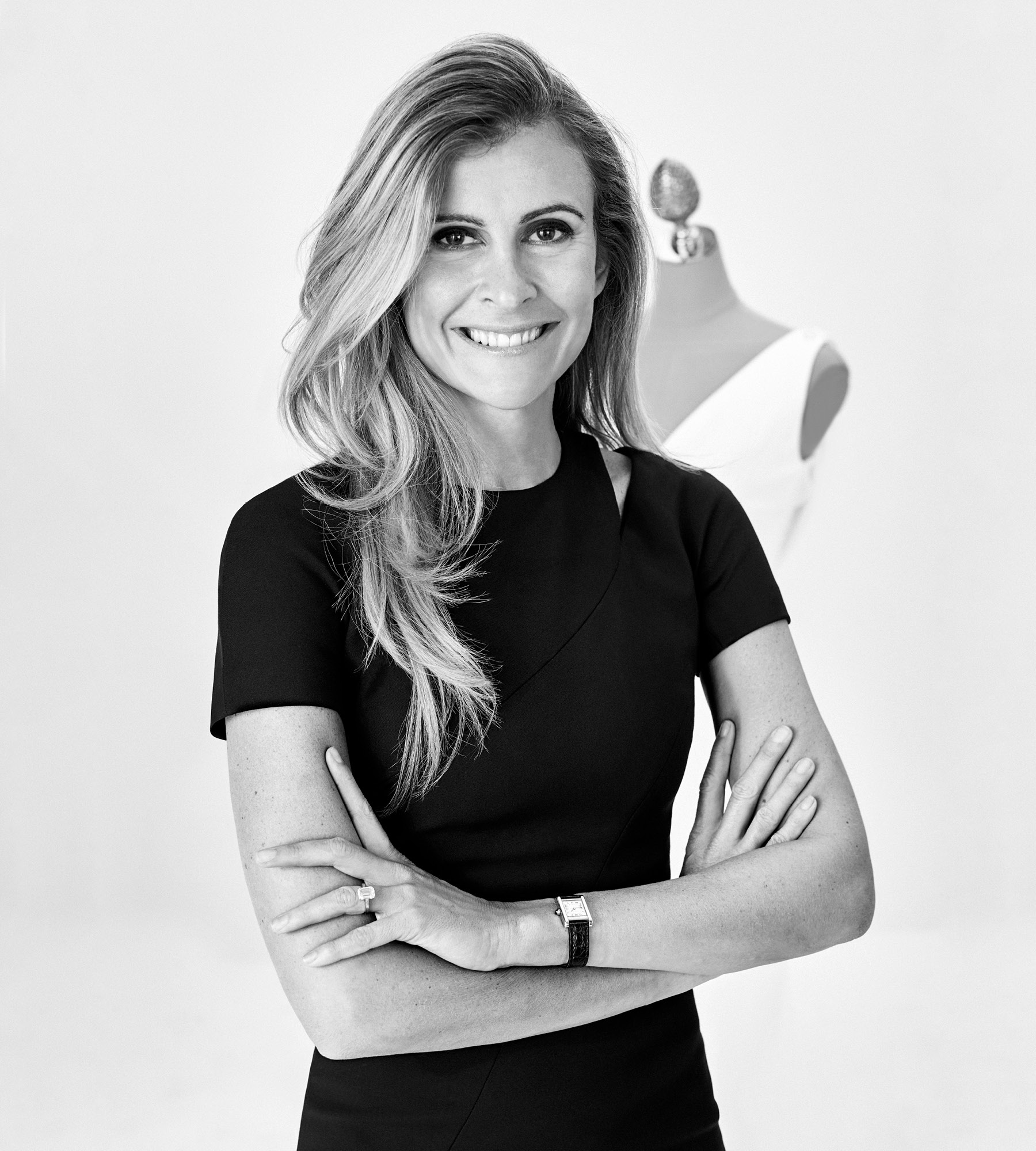Language
You can read the magazine in one of the following languages
Pronovias Group CEO Amandine Ohayon jokes, “It’s not like I woke up as a little girl and told myself I’m going to be managing a bridal company.” However, after a successful career in the similarly luxury world of fragrances and cosmetics, she remembers well the moment she decided that she wanted to do just that.
“When I met our Chair, Jean-Baptiste Wautier, it was one of those moments where you click with someone. It was an amazing connection – one of those unique encounters in your professional life that takes you onto a different path. And I must say I never regret it,” she reveals.
The potential for mergers and acquisitions was another drawcard. “We’ve done two acquisitions since I arrived. The first was with Nicole Milano, six months after I joined the company in 2018, and then in 2019 with Ladybird,” she shares.
“I think with Vera Wang we have an opportunity to completely change our approach to occasion wear, which is less traditional.”
And excited by the dual challenges of industry digitalisation and the arrival of the millennial, with a different way of approaching a customer journey, the global pandemic meant the need for transformation was accelerated.
“In hindsight, I think COVID-19 has been extremely good for the company because at a time when things are really tough, you see where the problems are much faster,” Amandine reflects. “We didn’t know how long the pandemic would last, but we always knew that weddings would come back because we believe that love will never be cancelled.”
The first change Amandine made was to decentralise and empower regional hubs for greater agility. She then looked at the supply chain because stock was put under severe pressure as a result of the pent-up demand unleashed once COVID-19 restrictions were lifted around the globe and weddings were once again celebrated. With demand now huge, a fast-track program for bestsellers has been implemented for the first time.
“We’ve also tried to import some stock – something we’ve never really done before – to help cope with that demand. And that allows us to really think differently about the whole model and the whole go-to market,” she says.
The other big change has been to fully embrace a customised online experience. “The reason brides are still coming to bricks-and-mortar stores is because it’s probably going to be the most expensive dress they’ve bought, so they want to touch it, they want to try it on, they want to guarantee this is the dress,” Amandine explains.
“We’re very proud because we’ve developed sustainable fabrics in all the key bridal fabrics, and also given clear guidelines to our suppliers on waste reduction.”
“It is also a social experience that they love. You go with your mother, you go with your best friend, you laugh, you cry. This is something that, unfortunately, is very hard to re-create online. Also, probably 99 per cent of our dresses go through some alteration because you want it to fit perfectly. You need to have expert guidance from bridal stylists, and again, it’s quite hard to get that online.”
Having bet on the need for state-of-the-art websites, however, Amandine futureproofed the company and still had time to sign a 10-year contract with Vera Wang during the pandemic. The next 18 months will be focused on strengthening the Group’s position in the US and China, expanding into new regions such as the Middle East, exploring further supply chain options, and also leveraging the Vera Wang connection for new lines.
“I think with Vera Wang we have an opportunity to completely change our approach to occasion wear, which is less traditional,” Amandine reveals. “I really believe that there will be more and more parties in the weeks and months to come.”
During her tenure, Amandine has really created relationships, both inside and outside the company. On the outside she’s forged and maintained solid bonds with suppliers such as shapewear and underwear company Sandra & Co and Carmen Font, supplier of hair accessories, belts and fashion jewelry for LA and crowns for Vera Wang. Internally, she has implemented a flatter structure and even a less formal dress code, to empower people via a relaxed environment.
She has also established close personal relationships with the factory owners she works with and developed a Strategic Vendor Management department to better allocate designs depending on the strengths of each factory.
“We’ve got what we call the ‘top eight club’. I have monthly calls with them, visit them four times a year, and we’re focusing on them much more than the others,” she points out. “Then we’ve got what we call strategic vendors. They are quite small in volume, but they are very key because of their expertise; for example, lace vendors in Italy – very niche, but very expert suppliers that we also treat with a lot of care.”

Finally, Amandine has also had time to revolutionise the company from a sustainability perspective, something unheard of in the bridal dress industry. “We started a program called #WeDoEco,” she says. “We’re very proud because we’ve developed sustainable fabrics in all the key bridal fabrics, and also given clear guidelines to our suppliers on waste reduction. We’ve also worked on waste reduction in the way we ship the dresses – with no hangers, using recycled packaging – and provided brides with the opportunity to donate the dress for it to have a second life.”
With an ambition to change the bridal industry, making it more sustainable and more digital, perhaps Amandine was born for the role after all.
